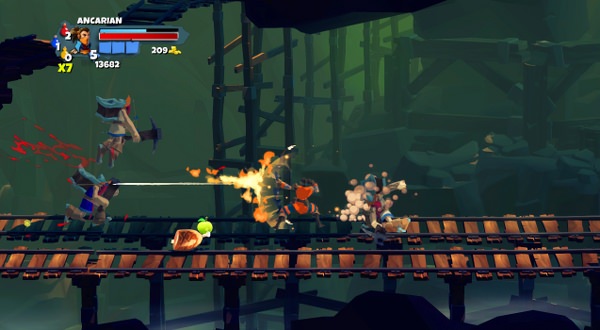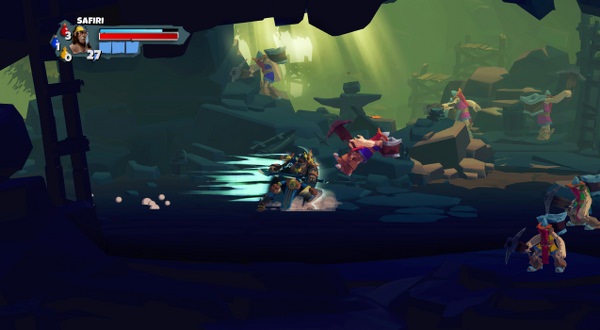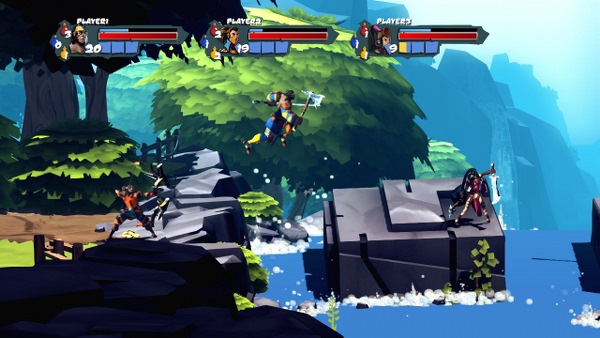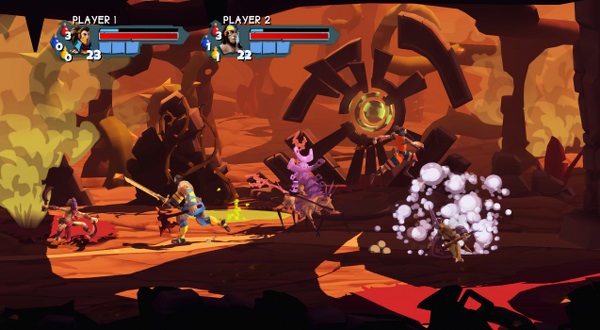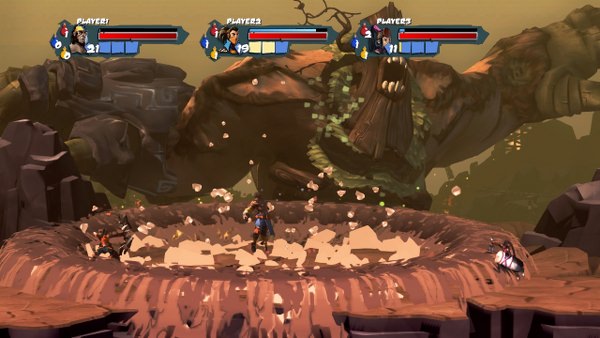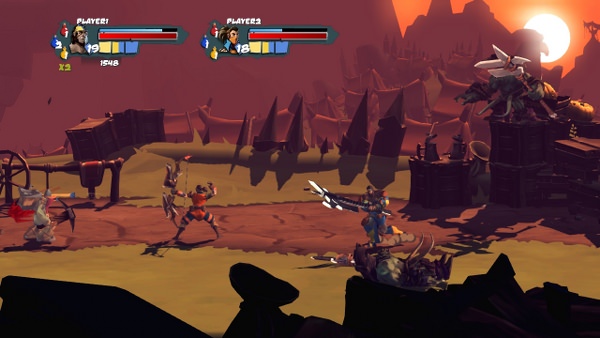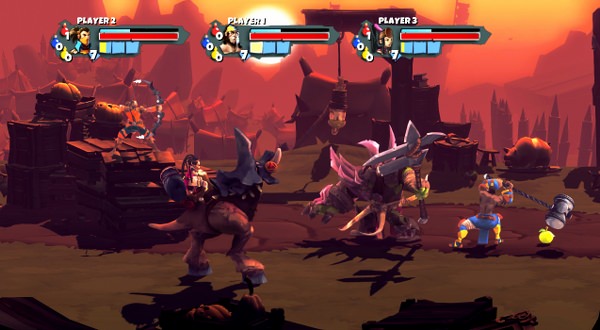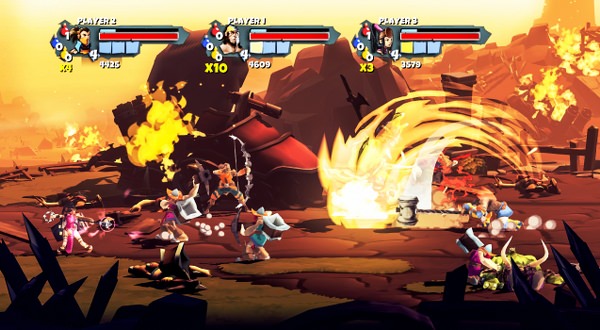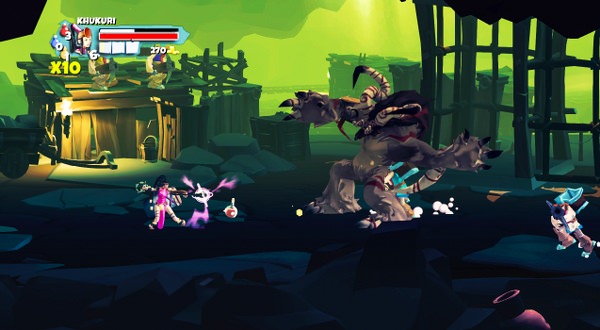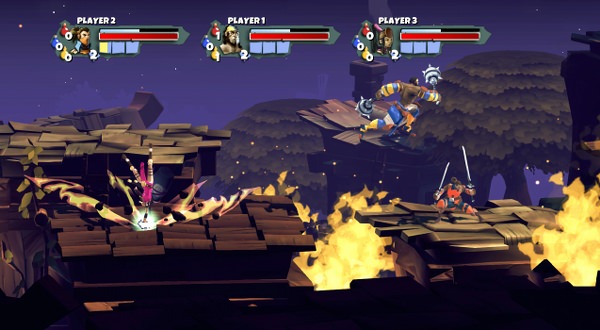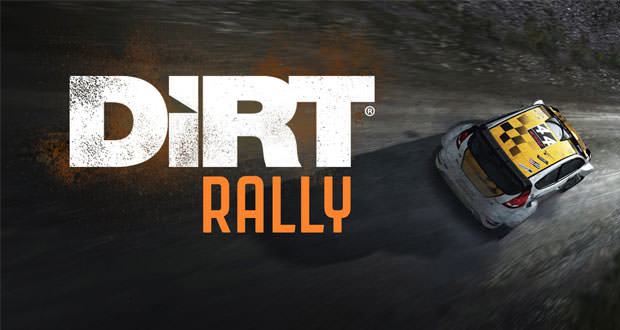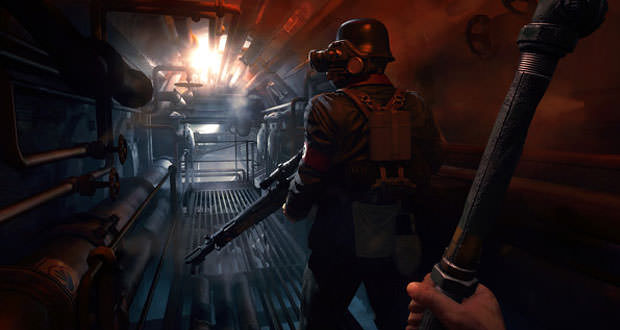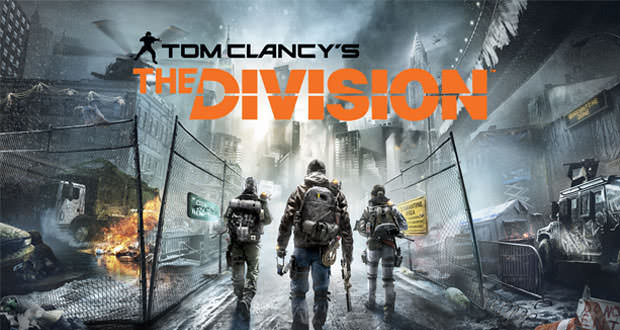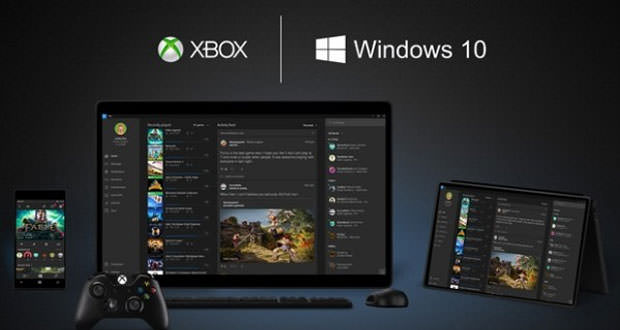Sacred Citadel
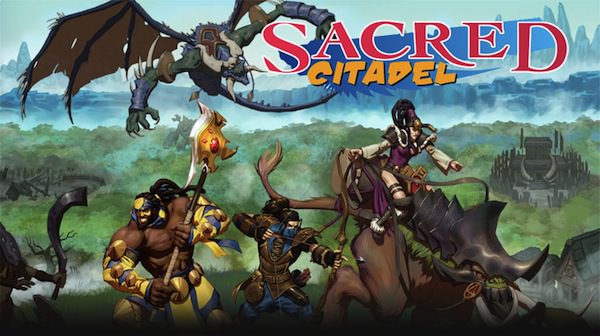
Introduction
The fighting genre, especially those side-scrolling, is a genre that has seen its most successful period in the 80s and 90s, both in the console at the time that in the arcades. It a little piece of history of those generations, brings to light moments of a life much more carefree and calm of that frantic to which we are accustomed to (or sometimes forced) to live: work, leisure, gaming, lives are evolving more and more towards the absolute mobility that leaves little room to stop, to the imagination, to think.
And gaming is evolving with it: play more frantic, more immediate and affecting more visually and qualitatively, textures, sparser and easy to assimilate without having to sit there and think, puzzles and pitfalls that can be solved in those few minutes of free time that we are now willing to devote to think before they give up.
This is the same premise of the review that I was going to write about Sacred Citadel: I will not deny that I liked the game, as we shall see in the analysis below, but I was not arrived at a mature reflection on what actually represented Sacred Citadel in the landscape modern gaming.
Then I remembered my past: When you met the whole family and we kids played at various Tekken and Mortal Kombat or even when it was in arcades and summer in the pool bars to spend hours in front of Street Fighter and Metal Slug looking to make the best use of the few tokens available.
The fighting games back then were more immediate, the ones where you had to ” think a little and beating much “, without being there to make you too many questions. And if you are looking for more reasoned games adventure games, there were plenty of examples around …
They were a kind of fun, but repetitive in the long run perhaps that was the point: there was never time to play with so much to lose heart, to switch from one game to another, we were content with what you had. Sacred Citadel is exactly that, it is a reminder of the past: immediate, fun, unpretentious, easy, repetitive in the long run. Then we could close the review here, saying that deserves to Gamemag three stars and advises you to buy it, even better if in some mini-selection of Steam (for PC version, at least).
But no. The guys from Southend Interactive have tried, have made the leap into the void with a kind now in disgrace, yes starting from a big name like that but proposing sacred a totally different game than RPG Action Ascaron. This game is definitely worth a review. You do not speak only of pros and cons but also the evolution of the fighting genre in this market where it has become a habit to rely on additional content (DLC) to ensure ongoing support and increase longevity.
And then we start talking about Sacred Citadel: the new title of Southend Interactive is located in the timeline (both as a release date for that plot) between Sacred 2 and Sacred 3 title on hold for 2013. It proposes a formula of side-scrolling beat up with 3D cell shading, remembering traits in the comic novel. The campaign can be played both solo and in cooperative up to three players, with much of the overall standing with scores, and develops in four acts.
Every act is formed by a series of levels with the mini-boss at the end of each of them, a boss stronger that marks the end of each act, a location market town to buy potions, items, and the opportunity to participate in challenges and unique setting. Let’s go now to discover the adventurers at our disposal, the combos, the items, bosses, and then we’ll talk about the multiplayer and technical analysis of the game.
Plot, Setting and Gameplay
The land of Ancaria, once peaceful, are in grave danger. The evil empire of enslaved its population, and is using the power of Grimmoch to wipe Seraphin, who has sworn to protect her. Defeat for the empire Metere you will need to test yourself as a warrior riding terrifying creatures, acquiring supernatural abilities and managing powerful weapons and rare treasures. Gather your friends and join the RESISTANCE against evil!
Three warriors join forces against an evil force that threatens to enslave the peaceful world of Ancaria. Zane Ashen Empire has created an army of Grimmoc, changing the Orcs in order to generate lethal enemies to the Seraphim. Only the union of these heroes will allow them to have any hope of success, supporting each other with their skills!
The plot proposal a few months ago for Sacred Citadel by the guys at Southend I had been hoped-for something more than that then I got to try their hand: although they really liked the style comic novel in which the story is presented, this last one is very trivial and although representing only the frame of the gameplay turns out to be too much neglected.
Remembering that Sacred Citadel as a kind of game aims to enchant and amaze the player but to have fun doing it, you can safely omit the plot, even if faced with choices really not credible by our adventurers have a crooked little nose, and I wondered why more effort has not been done (if you want to avoid spoilers, I am referring to the events immediately after the battle with the Queen of the Orcs, at the end of the second act, and the choice, in my opinion, nonsense that our adventurers decide to carry forward).
Even the difficulty of the game is a point on which I have been thinking a lot: the game is very quick and easy to learn even for a novice, the difficulty increases as you proceed and because the boss at the end of Act requires a unique approach to defeat them and because the enemies that we face in the advanced stage of the game will be more and will have more powerful attacks and combos and secondary effects.
Add that the adventurer that I’ve tried most, the Ranger Ancariano has special attacks (those that consume power cells) really strong too: especially the last one kills virtually all the bosses of each act and all the mini-bosses, except the final boss of the fourth and final act.
If you decide not to use these facilities, the game becomes more interesting from this point of view has been done a really good job, given that our character can fend off enemies, dodge attacks with somersaults, perform a double jump, and make jumps longer if you use the button to shoot. The proper use and at the right time of these actions will allow you to get the better of any enemy and any number (I found it very useful, especially somersaults and double jump).
As for the weapons and combos are at discrete levels even if it were not bad to see something more: all adventurers carry the same weapons (all use two weapons to choose from swords, maces and axes) and use the same armor (but graphically change according to the character who wears them), also arranging combo (a little few to be honest) that apply interesting effects on the enemy: they can stun enemies hurl at the top or just get away from us.
In addition to the normal weapons, every adventurer has a unique weapon with different effects (the unique weapon and unique powers are the only real difference between the characters): for example, the Ranger will have a span and the Warrior a hammer with both hands. The weapons also can also have spells of fire, ice, lightning and nature and will apply respectively the effects of incineration (damage over time), freezing (enemy stuck for a few seconds), poisoning (damage over time) and dizziness (enemy stuck for a few seconds).
Normal and special weapons of various levels are present in the four cities that you can visit either as loot from slain enemies. There are also some mounts in the game, which can be used both by the protagonist from enemies, with very powerful attacks but rather slow. A peculiarity about it is that normal attacks will damage the player mounts, so you have to be careful to fight the enemies away from them to avoid the risk that flee away for too many damages.
From the point of view of the character progression and customization, we are facing a great job: there are healing potions, to increase the damage and power crystals for the temporary improvement of statistics, customization of your name with ” titles ” unlocked during missions based on the achievements obtained, strengthening the statistics every time you level up. In the end though, and this is noted in the co-op, adventurers will be very similar in features and only unique weapons and attacks and attacks using the power to cause a change.
All this could be a downside if you were talking about a game-like Sacred 2 or 3, or in an action RPG, but in a scrolling beat em up is not a negative point because it increases the ease of learning and use of the characters, all by the name of fun and enjoyment of your gameplay.
Compared to the preview in which we have already spoken of the characters available, it is added to another adventurer, the Maga Serafina, with spells of fire and ice, as well as innate ability in melee combat with two weapons (like the other characters for that matter). The game overall is really easy to learn, and if this were not enough Southend has added a detailed and comprehensive guide of images for each feature and character of the game.
The City
A great novelty compared to scrolling beat em up in the past about the presence of the city: every action has an exclusive city location we can visit before or after each level and where we can prepare for subsequent missions buying crystals, unique weapons and normal weapons, armor and potions, plus you can bet some of the money on hand to participate in challenges (each level has three challenges, do not die for the entire layer, make a certain number of points or complete the degree within the stipulated time).
At the end of each level you will see a screen with your score and our assessment (bronze, silver, gold). The score of each level is then added to the total score, which determines the position in the ranking online.
The importance of the city, reaches particularly high levels in the single player, where the loot is really significant (both arms of gold), but co-op is very useful since the loot is lower, and it is also shared with the rest of the team. It will always be helpful to visit a city before facing the boss at the end of the act.
Boss and mini-boss very well made, both graphically and in terms of attacks available: each of these super-enemies requires a unique approach to be defeated and comes standard with more powerful attacks that require a particular behavior to survive some attacks cannot be parried and require you to roll away to be dodged. Others damage the soil and require the construction of double jump combo in flight in order to return to earth after they are finished.
Even the enemies will have different characteristics in the normal course of the game, some teleport behind us. Others will attack from the sky with bombs and poisonous darts. Others will try to gore, and still others will use huge shields to protect themselves and then fling away to be able to use spells from a distance.
The variety in the enemies is not lacking, what is lacking is perhaps the choice of difficulty level, which is most often dictated by the amount of enemies than from their actual ability to carry out attacks at their disposal?
The gameplay as a whole is very fluid and fun. The combos are simple to implement and effective on groups of enemies, enemies that because of the variety and number that often require special approaches.
This leads to long a certain repetitiveness in gameplay, unfortunately, typical of all the scrolling beat-em: It will be reduced by the number of combos or for their equal efficacy but after a while time (especially after reading it the first time or against enemies that do-little damage but have a lot of HP) the game starts to tire: there are few combos and starting the story mode it turns out that the enemies do not scale with our level, and they all die with a single shot, making it too simple in the gaming experience. And this an option to reset your character and start from scratch.
Who is saying it’s three?
Let’s now look at the multiplayer mode of Sacred Citadel: it is possible to play up to three players locally or online. The gaming experience is basically the same even if playing with teammates is definitely more fun.
The looting is lower and it is shared, so there are fewer objects. It appears a mechanical leveling much faster: playing with a character of the first level with a fellow high level (eg level 30) that acts as a host, you can participate in missions that would normally not be able to access level 1.
Given that the experience is split in half, the level 1 character will level at an incredible speed, making even twenty levels in only one of the more advanced missions. Obviously, you will die very quickly but our combo, even at level 1, they are often able to block the enemy from attack, allowing us to stay alive long enough to at least be able to survive (but then, finding few weapons, we will have to wait for the end of the mission to go into town and equip properly).
So the choice is simple: single player for those who want the looting and the most powerful weapons, multiplayer to level as fast as a certain character. The multiplayer experience unfortunately stops at the only co-op even if it is said that there are new features added with future DLC or expansions.
But the strong points of Sacred Citadel are the graphics and environments. The cell shading is really well taken care of, the details are defined, bright colors, loads and contrasted. The result is a game very much alive able to convey that tone from a comic novel that leaves little room for seriousness, always full of fun Player. The graphical effects are significant, both those weapons that only those powers. They look nice and contrast with the monotony of the normal combo.
Even on an artistic level we are on a good level, the settings are perfect in every detail, from the objects in the foreground to those in the background, always recreating a new one according to location: there are forests, deserts, mountains, swamps, mines, temples, villages, all well marked and with its own personality.
Each level has a number of unique elements, which will develop the gameplay: rivers swamp where fearsome monsters sprout of amphibians in mines where we will have to dodge the trolleys run amok, from mountain passes where we will be totally surrounded the edge of a ravine jungle where we can use the logs to throw at monsters which looked like ravenous wolves. In addition, the boss fights and mini-bosses show some effects that we will not find in other missions.
As far as the physics engine we are at level’s just sufficient interaction with the environment is quite low (just a few cases and very few destructible objects with which to interact) and also as stun and knockdown effects created by the combo does not excel. On this point, I would have expected something more, especially as the interaction with objects in the environment, which could have been really more than that item in order to enrich the gameplay enough to go from 3 to 4 stars as a final judgment.
The audio sector, while not great, is more than a sufficient level instead of, or as a soundtrack that as the quantity and quality of sound effects for weapons and spells. The dialogues are a bit too skinny and could have been enriched.
Sacred Citadel will surely make conspicuous use of the DLC (it is already the first available that allows you to play a further act of the main story in an attempt to kill the Queen of the orcs), in order to enrich the gaming experience, which is limited only in the main campaign around 5-6 hours excluding challenges.
Conclusions
Ultimately Sacred Citadel is a welcome breath of fresh air in landscape scrolling beat em up. While not excelling in any particular aspect, the graphics are well taken care of and very simple gameplay make it a catchy title, especially considering the price aggressive (and honest) for the PC version of € 14.99.
And definitely one to consider for lovers of this genre, having little or nothing to do with the world of Sacred we are used to with Sacred 1 and 2 (whose fans might turn up a little nose to the plot of dubious quality). Surely, it is a title that will be expanded with a number of additional content, and having the advice of a friend I would tell him to wait for the first offer of Steam and buy the complete package of base game plus all the DLC.
To tell the truth I did not have high expectations about Sacred Citadel. But the game really deserves an opportunity, not because of the name behind it as much for the excellent job done by the guys at Southend Interactive, a few weeks to become a software house indie. The currency Metacritic 61/100 and listening to some the opinion of the community’s judgment of the game is between 6 and 7.
What he has done to earn the three little stars here at Sacred Citadel of Gamemag it was the reflection that I did at first, the reward this leap of faith with a side-scrolling beat solid and well made, that looks to the past and remembers some verses the glories of the past while using a graphics engine for nothing dated.
Sacred Citadel is very enjoyable to play and casts an eye to the future. By inserting some new developments such as online co-op and cities to visit, the most common elements in action RPG like Diablo or sacred precisely.
Product prices and availability are subject to change. Any price and availablility information displayed on Amazon at the time of purchase will apply to the purchase of any products.


